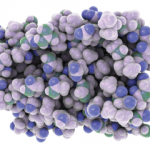 ACR CONVERGENCE 2021—Rheumatology is an exciting and rapidly advancing field, but it can be tough to stay up to date on the latest advances in basic science while maintaining a full-time practice, especially for those of us who are clinically focused. Michael B. Brenner, MD, EF Brigham Professor of Medicine, Harvard Medical School, Boston, and director of cell and molecular immunology, Division of Rheumatology, Inflammation and Immunity at Brigham and Women’s Hospital, Boston, provided a whirlwind review of the latest and greatest basic science research in rheumatology during ACR Convergence 2021 on Nov. 5, 2021.
ACR CONVERGENCE 2021—Rheumatology is an exciting and rapidly advancing field, but it can be tough to stay up to date on the latest advances in basic science while maintaining a full-time practice, especially for those of us who are clinically focused. Michael B. Brenner, MD, EF Brigham Professor of Medicine, Harvard Medical School, Boston, and director of cell and molecular immunology, Division of Rheumatology, Inflammation and Immunity at Brigham and Women’s Hospital, Boston, provided a whirlwind review of the latest and greatest basic science research in rheumatology during ACR Convergence 2021 on Nov. 5, 2021.
2021 Highlights
Dr. Brenner began by highlighting new insights into the mechanisms by which inflammation—specifically interleukin (IL) 1—contributes to cartilage damage in osteoarthritis (OA). Lee et al. described how IL-1 upregulates Piezo1, a mechano-sensing calcium channel receptor that renders chondrocytes more sensitive to deformation, microtrauma and strain. Thus, the effects of inflammation make chondrocytes more sensitive to injury and degeneration.1
Next, he drew attention to the newly defined adult-onset autoinflammatory syndrome VEXAS, which demonstrates that the ubiquitin-proteasome system plays key roles in inflammation and is “way more than just protein trash removal.”
Beck et al. used a genotype-first, phenotype-neutral strategy to identify patients with somatic ubiquitin-like modifier activating enzyme 1 (UBA1) mutations causing severe adult-onset autoinflammatory disease.2 VEXAS, named for some of its distinguishing features (i.e., vacuoles, E1 enzyme, X-linked, autoinflammatory, somatic), is most commonly identified in adult men. It can cause recurrent fevers, lung and skin involvement, and hematologic abnormalities that are often refractory to conventional immunosuppressive therapies.
Researchers were not able to identify the exact mechanism of disease in VEXAS, but noticed increased serum cytokine levels in these men. Dr. Brenner remarked that this is a “great example of a new scientific strategy that [may] be used to identify other syndromes.”
Dr. Brenner asked, ‘Is it possible that we might have missed what [may] be the most striking driver of the IFN signature [in lupus]?’
Dr. Brenner pivoted to the interferon (IFN) signature in lupus, challenging the audience with this question: “Is it possible that we might have missed what [may] be the most striking driver of the IFN signature?”
Caielli et al. described how mitochondrial retention in red blood cells drives a type I IFN pathway in severe lupus.3 Mitochondrial removal from red blood cells depends on a metabolic switch that results in activation of the ubiquitin-proteasome system and subsequent autophagy. Interestingly, many red blood cells in lupus patients retain mitochondria. The authors noted striking clinical correlations between mitochondrial retention in red blood cells with higher Systemic Lupus Erythematosus Disease Activity Index (SLEDAI) scores, renal disease and higher IFN scores.
Any discussion of basic science in 2021 would be remiss to exclude COVID-19 or messenger ribonucleic acid (mRNA) vaccines. Dr. Brenner highlighted a major immunologic insight into COVID-19, which elucidated how autoantibodies against type I IFN may contribute to life-threatening COVID-19 pneumonia in men, as well as how mRNA vaccines and the RNA technology may work for either immune stimulation or tolerization.4–6
Dr. Brenner also discussed an intriguing proof-of-concept study describing a “genome-engineered bioartificial implant for autoregulated anti-cytokine drug delivery” in mice.7 Using gene-editing technology, researchers created a self-regulating, synthetic gene circuit that sensed inflammation. When detected, the circuit produced natural anti-cytokine therapy (e.g., IL-1 receptor antagonist protein [IL-1Ra]). The model showcased a dynamic, autoregulated delivery of IL-1Ra that worked recurrently to mitigate inflammation, pain and structural joint damage in a mouse arthritis model.
“The future may hold bioengineered, implantable cells that respond in an immediate way to changing levels of inflammation. Although this study is a long way from translation, I see intriguing potential for drug development in the future,” he said.
To close his talk, Dr. Brenner acknowledged that there were several other outstanding papers this year that he could not present due to time constrictions.
Summary
The past year has been a prolific and exciting one in basic science related to rheumatology. The scientific community has gained new insight into the role of IL-1 in OA, and we expanded our understanding of the role the ubiquitin-proteasome system plays in inflammation. We witnessed a new scientific strategy applied to identify a novel autoinflammatory syndrome, and we discovered that retention of mitochondrial red blood cells contributes to the IFN signature in lupus. Also in 2021, we have furthered our understanding of COVID-19 and harnessed RNA technology to combat it.
We may be on the precipice of a future that holds bioengineered, implantable, autoregulated, anti-cytokine drug delivery systems.
Samantha C. Shapiro, MD, is an academic rheumatologist and an affiliate faculty member of the Dell Medical School at the University of Texas at Austin. She received her training in internal medicine and rheumatology at Johns Hopkins University, Baltimore. She is also a member of the ACR Insurance Subcommittee.
References
- Lee W, Nims RJ, Savadipour A, et al. Inflammatory signaling sensitizes Piezo1 mechanotransduction in articular chondrocytes as a pathogenic feed-forward mechanism in osteoarthritis. Proc Natl Acad Sci U S A. 2021 Mar 30;118(13):e2001611118.
- Beck DB, Ferrada MA, Sikora KA, et al. Somatic mutations in UBA1 and severe adult-onset autoinflammatory disease. N Engl J Med. 2020 Dec 31;383(27):2628–2638.
- Caielli S, Cardenas J, de Jesus AA, et al. Erythroid mitochondrial retention triggers myeloid-dependent type I interferon in human SLE. Cell. 2021 Aug 19;184(17):4464–4479.e19.
- Bastard P, Gervais A, le Voyer T, et al. Autoantibodies neutralizing type I IFNs are present in ~4% of uninfected individuals over 70 years old and account for ~20% of COVID-19 deaths. Sci Immunol. 2021 Aug 19;6(62):eabl4340.
- Bastard P, Rosen LB, Zhang Q, et al. Autoantibodies against type I IFNs in patients with life-threatening COVID-19. Science. 2020 Oct 23;370(6515):eabd4585.
- Krienke C, Kolb L, Diken E, et al. A noninflammatory mRNA vaccine for treatment of experimental autoimmune encephalomyelitis. Science. 2021 Jan 8;371(6525):145–153.
- Choi YR, Collins KH, Springer LE, et al. A genome-engineered bioartificial implant for autoregulated anticytokine drug delivery. Sci Adv. 2021 Sep 3;7(36):eabj1414.



